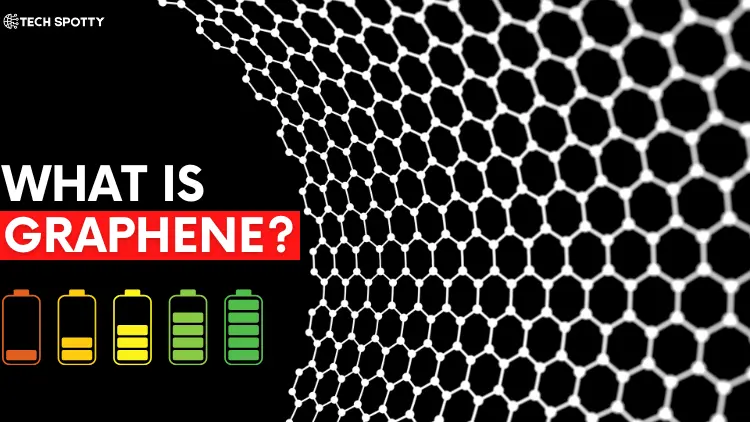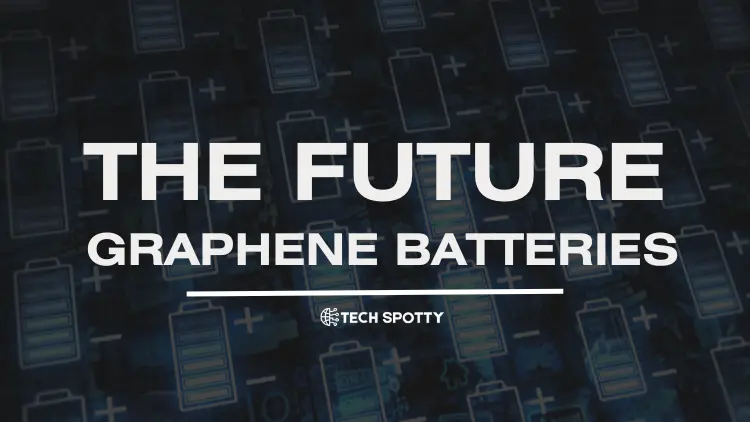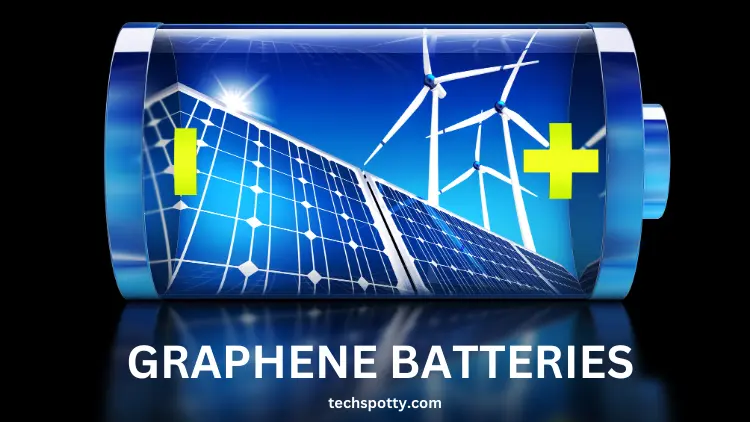Graphene Batteries | Energy Storage Technology
Graphene batteries are the latest new technology that could change the future of energy storage. Unlike traditional batteries, which use materials like lithium, graphene batteries are made from a thin layer of carbon atoms arranged in a honeycomb pattern.
This unique structure allows these batteries to charge much faster and hold more energy than standard batteries. They are also lighter and more durable, making them ideal for smartphones, electric cars, and other modern devices. As research continues, these batteries could become a game changer in powering our world.
What is Graphene?
Graphene is a super thin material made from a single layer of carbon atoms arranged in a honeycomb pattern. It’s one of the strongest and lightest known materials and can conduct electricity well. Even though it’s incredibly thin, it’s also very tough and flexible.

Graphene is used in many new technologies, like better batteries, faster electronics, and stronger materials. Because of its amazing properties, graphene is being studied for use in everything from smartphones to space exploration.
Graphene is tough, flexible, light, and highly resistant. It’s calculated that this material is 200 times more resistant than steel and five times lighter than aluminium. With these properties, graphene has applications in the energy, construction, health, and electronics sectors.
What are Graphene Batteries?
Graphene are special type of batteries that use graphene, a super thin and strong material made of carbon. These batteries charge much faster and last longer than regular batteries, like the ones in your phone or laptop. They can also store more energy, making them ideal for electric cars, smartphones, and other gadgets.
These batteries are lighter, more powerful, and heat resistant, so they don’t overheat easily. Scientists are still working on improving them, but they could be the future of energy storage.
Graphene Batteries Overview
| Parameter | Value |
|---|---|
| Surface Area | 2,630 m²/g |
| Battery Energy Density | 150/160 Wh/kg |
| Fats Charge Time | 15 minutes |
| Theoretical Energy Limit | 1050 wh/kg |
| Voltage range | 158 V to 972 V |
| Operating Temperature Range | 40 °C to 50 °C (with minimal capacity loss) |
ALSO READ: Top 10 Best Insurance Companies in the USA
Graphene Aluminium Hybrid Battery
A Graphene Aluminium Hybrid Battery is a new type of battery that mixes graphene and aluminium to create something better than regular batteries. Here are its key features in simple terms:
- Faster Charging: These batteries charge fast, sometimes in just a few minutes, making them great for electric cars and smartphones.
- More Energy: Because of the mix of graphene and aluminium, these batteries can hold more energy without being too big or heavy.
- Lasts Longer: They can be recharged many more times than normal batteries without losing their ability to hold energy.
- Better for the Environment: Aluminium is more eco-friendly than materials like lithium, and graphene helps make the battery more sustainable.
- Lightweight and Strong: These batteries are light but very strong, making them durable and less likely to get damaged.
- Safe to Use: They don’t overheat easily and are more stable, even in extreme temperatures.
The Future of Graphene Batteries
Tesla recently announced that their Model 3 battery has an energy density close to 260 Wh/kg, which means it can store much energy. However, the battery needs a complicated cooling system to prevent overheating, which takes up a lot of space in the car. On the other hand, graphene battery don’t overheat or explode, so they don’t need a cooling system. This means more space can be used for extra batteries in electric cars, allowing them to store more energy.

A big breakthrough in graphene battery technology came when GAC Motor Co. Ltd, a Chinese car company, launched the AION V car. This car uses a graphene battery that can go 1,000 km on a single charge and can be recharged to 80% in 8 minutes. As graphene batteries continue to be developed, they are expected to outperform traditional batteries, making them more popular shortly.
Advantages and Disadvantages of Graphene Battery
Here are some advantages and disadvantages of Graphene Battery:
Advantages of Graphene Battery:
- Faster Charging: Graphene batteries charge much faster than traditional batteries, often in minutes, making them ideal for devices like smartphones and electric vehicles.
- Higher Energy Density: They can store more energy in a smaller space, meaning longer battery life without making devices bulkier.
- Longer Lifespan: These batteries last longer and can be recharged many more times without losing much capacity, reducing the need for replacements.
- No Overheating: Graphene batteries do not overheat or catch fire easily, making them safer than traditional lithium ion batteries.
- Lightweight and Strong: Graphene is lightweight yet extremely strong, which makes these batteries more durable and less prone to damage.
- Eco Friendly: They use less harmful materials, making them more environmentally friendly than other battery types.
Disadvantages of Graphene Battery:
- High Cost: The production of graphene is still expensive, making graphene batteries more costly to manufacture than traditional batteries.
- Limited Commercial Availability: Graphene battery technology is still developing, so it’s not widely available for everyday use.
- Complex Manufacturing Process: Making graphene batteries involves complex and precise processes, which can slow down large scale production.
- Unknown Long Term Effects: While they have shown promising performance, the long-term effects and real world durability are still being tested.
ALSO READ: How to See Someone’s Location on iPhone Messages
Battery types and characteristics
Primary Batteries
Primary batteries are disposable and can only be used once. After use, they can’t be recharged because the materials inside change permanently. Primary primary batteries include zinc carbon batteries and alkaline batteries, often used in toys, flashlights, and other portable devices.
Secondary Batteries
Secondary batteries are rechargeable. They can be used multiple times because the materials inside can return to their original state after charging. Secondary batteries include lead-acid batteries (used in cars) and lithium-ion batteries (used in phones and laptops).
Batteries come in different shapes and sizes, each with its own advantages and disadvantages:
- Nickel-cadmium (Ni-Cd) batteries have low energy storage but are durable and affordable. They are used in video cameras and power tools but contain toxic materials that harm the environment.
- Nickel Metal Hydride (NiMH) batteries hold more energy than Ni-Cd batteries but don’t last as long. They are found in mobile phones and laptops.
- Lead Acid batteries are heavy and mainly used in large devices where weight doesn’t matter, like hospital equipment and emergency lights. They are cheap and reliable for big power needs.
- Lithium-ion (Li-ion) batteries are lightweight and store a lot of energy, making them perfect for phones and computers. However, they are fragile and need safety circuits to prevent overheating.
- Lithium-ion Polymer (Li-ion polymer) batteries are slimmer and safer than regular Li-Ion batteries used in mobile phones. Although they last longer, they are less common because Li-Ion batteries are cheaper and hold more energy.
Bottom line
Graphene batteries are a new technology that charges faster, lasts longer, and holds more energy than regular batteries. They are lightweight, strong, and safe, perfect for smartphones and electric cars. However, they are still expensive and not yet widely available.
The article also explains different types of batteries, like primary (disposable) and secondary (rechargeable). It highlights the pros and cons of each, such as lithium-ion and lead-acid batteries. As graphene batteries improve, they may become the future of energy storage.
FAQ’s
What are graphene batteries?
Graphene batteries are advanced batteries made with graphene, offering faster charging, more energy, and longer life than regular batteries.
How are graphene batteries better than lithium-ion batteries?
They charge faster, hold more energy, don’t overheat, and last longer.
Why aren’t graphene batteries widely used yet?
They are still expensive to make and in the early stages of development.
Where can graphene batteries be used?
They are great for smartphones, electric cars, and other gadgets needing long-lasting power.
Are graphene batteries safe?
Yes, they are safer than regular batteries because they don’t overheat or catch fire easily.





